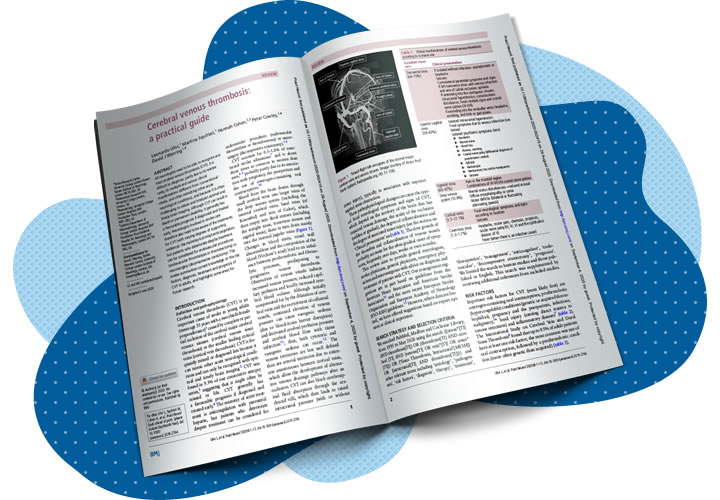Cerebral venous thrombosis (CVT) is an important cause of stroke in young adults (mean age 33 years with a two-thirds female preponderance) caused by complete or partial occlusion of the cerebral major cerebral venous sinuses (cerebral venous sinus thrombosis, CVST) or the smaller feeding cortical veins (cortical vein thrombosis).
CVT is frequently missed or diagnosed late because it can mimic other acute neurological conditions and can only be recognised with optimal and timely brain imaging. Important risk factors for CVT (most likely first) are oestrogen-containing oral contraceptives, prothrombotic (hypercoagulable) conditions (genetic or acquired thrombophilias), pregnancy and the puerperium, infections, malignancy, head injury (causing direct trauma to venous structures) and inflammatory diseases.




